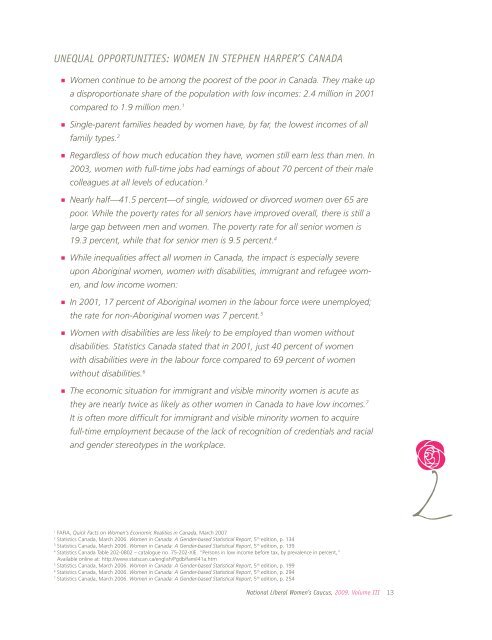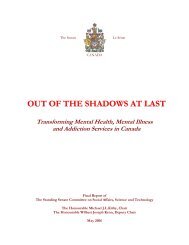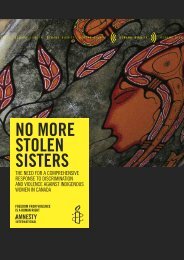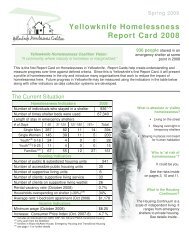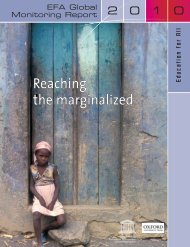THE PINK BOOK, VOLUME III - YWCA Canada
THE PINK BOOK, VOLUME III - YWCA Canada
THE PINK BOOK, VOLUME III - YWCA Canada
Create successful ePaper yourself
Turn your PDF publications into a flip-book with our unique Google optimized e-Paper software.
Unequal Opportunities: Women in Stephen Harper’s <strong>Canada</strong><br />
n Women continue to be among the poorest of the poor in <strong>Canada</strong>. They make up<br />
a disproportionate share of the population with low incomes: 2.4 million in 2001<br />
compared to 1.9 million men. 1<br />
n Single-parent families headed by women have, by far, the lowest incomes of all<br />
family types. 2<br />
n Regardless of how much education they have, women still earn less than men. In<br />
2003, women with full-time jobs had earnings of about 70 percent of their male<br />
colleagues at all levels of education. 3<br />
n Nearly half—41.5 percent—of single, widowed or divorced women over 65 are<br />
poor. While the poverty rates for all seniors have improved overall, there is still a<br />
large gap between men and women. The poverty rate for all senior women is<br />
19.3 percent, while that for senior men is 9.5 percent. 4<br />
n While inequalities affect all women in <strong>Canada</strong>, the impact is especially severe<br />
upon Aboriginal women, women with disabilities, immigrant and refugee women,<br />
and low income women:<br />
n In 2001, 17 percent of Aboriginal women in the labour force were unemployed;<br />
the rate for non-Aboriginal women was 7 percent. 5<br />
n Women with disabilities are less likely to be employed than women without<br />
disabilities. Statistics <strong>Canada</strong> stated that in 2001, just 40 percent of women<br />
with disabilities were in the labour force compared to 69 percent of women<br />
without disabilities. 6<br />
n The economic situation for immigrant and visible minority women is acute as<br />
they are nearly twice as likely as other women in <strong>Canada</strong> to have low incomes. 7<br />
It is often more difficult for immigrant and visible minority women to acquire<br />
full-time employment because of the lack of recognition of credentials and racial<br />
and gender stereotypes in the workplace.<br />
1<br />
FAFIA, Quick Facts on Women’s Economic Realities in <strong>Canada</strong>, March 2007<br />
2<br />
Statistics <strong>Canada</strong>, March 2006. Women in <strong>Canada</strong>: A Gender-based Statistical Report, 5 th edition, p. 134<br />
3<br />
Statistics <strong>Canada</strong>, March 2006. Women in <strong>Canada</strong>: A Gender-based Statistical Report, 5 th edition, p. 139<br />
4<br />
Statistics <strong>Canada</strong> Table 202-0802 – catalogue no. 75-202-XIE. “Persons in low income before tax, by prevalence in percent,”<br />
Available online at: http://www.statscan.ca/english/Pgdb/famil41a.htm<br />
5<br />
Statistics <strong>Canada</strong>, March 2006. Women in <strong>Canada</strong>: A Gender-based Statistical Report, 5 th edition, p. 199<br />
6<br />
Statistics <strong>Canada</strong>, March 2006. Women in <strong>Canada</strong>: A Gender-based Statistical Report, 5 th edition, p. 294<br />
7<br />
Statistics <strong>Canada</strong>, March 2006. Women in <strong>Canada</strong>: A Gender-based Statistical Report, 5 th edition, p. 254<br />
National Liberal Women’s Caucus, 2009, Volume <strong>III</strong> 13


